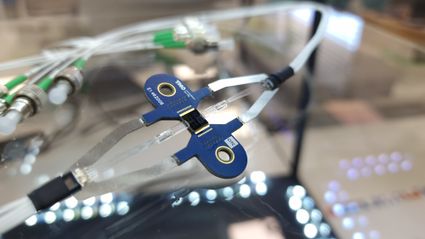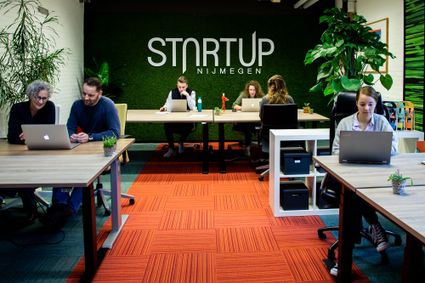
16x healthcare innovations from Nijmegen
Healthcare in Nijmegen is constantly developing, as more and more innovations are introduced. Did you know, for example, that a company from Nijmegen has designed a privacy hood for hospital beds, allowing patients to get more rest? Or that a different company is developing medicine for energy metabolism disorders? Someone else wants to accelerate the application of artificial intelligence (AI) in pathology to improve the recovery odds of cancer patients worldwide. Wondering what other healthcare innovations there are? We’ve listed them in this article.
1. App to Order
During an operation at CWZ, instruments for the operating theatre were ordered via walkie-talkies or over the phone. This could be done more efficiently and clearly, which is why they developed the innovative mobile app App to Order for the Central Sterilization Department (CSA). With App to Order, you can order instruments, consumables, and other items at the push of a button. CSD staff receive a clear notification where they can immediately see whether the request is urgent, what type of materials it involves and where those are stored in the warehouse. In addition, the status of the OR can be monitored online and doctors can exchange messages. This healthcare innovation creates more peace in the OR, saves time, provides more clarity, and a better overview and insight into requests and stock.
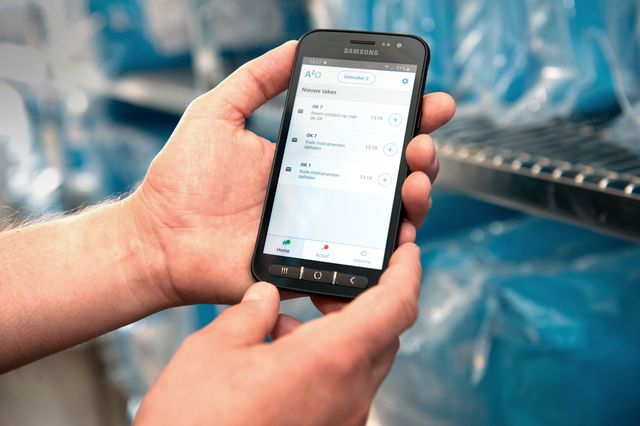
2. Helpful thoughts app
eHealthfabriek wants to make help and support more fun and creative, which is why they started developing apps, games and virtual tools. The Helpful Thoughts app is one of those tools. A lot of children and teenagers suffer from negative thoughts and feelings. By using the Helping Thoughts app, they learn to analyse and control these thoughts in difficult situations. The app lets them build their own islands to make the world of their thoughts more beautiful. The animals on the island help the users in this process and the more they practise, the bigger the island becomes.
3. Treatment of chronic wounds with cold plasma
Cold plasma can stimulate wound healing and is especially beneficial for chronic wounds like diabetic foot wounds, bedsores, and open leg wounds. Plasmacure has developed a safe way to apply cold plasma directly to a wound: PLASOMA. PLASOMA consists of an electric Pad and a Pulser that deliver bactericidal cold plasma directly into the wound. This treatment method can also be used at home.
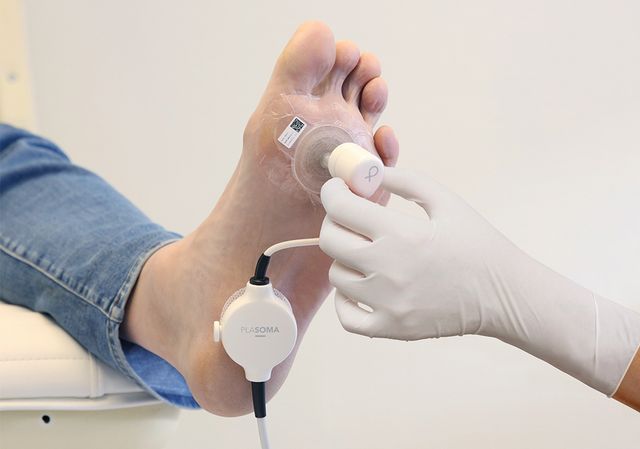
4. Privacy hood for hospital beds
Sleep is extremely important for both the physical and mental health of a patient, yet many patients sleep badly in hospital. Nuisance from light and sound is one of the most frequently mentioned complaints by patients. In addition, they find privacy important and have less of it in the hospital. Micro-Cosmos developed a hood for patients' hospital beds that’ll help combat sleep deprivation. The hood reduces external stimuli and gives patients privacy.
5. Liz the digital healthcare assistant
Liz is a digital help-in-home for vulnerable seniors developed by ConnectedCare. It helps care professionals to monitor patients remotely, collect self-reports, and optimise recovery processes. Liz offers its clients sleep problems, malnutrition, and rehabilitation modules. You can have her regularly ask you how things are going, show goals and reminders, and show targeted information and advice on the platform.
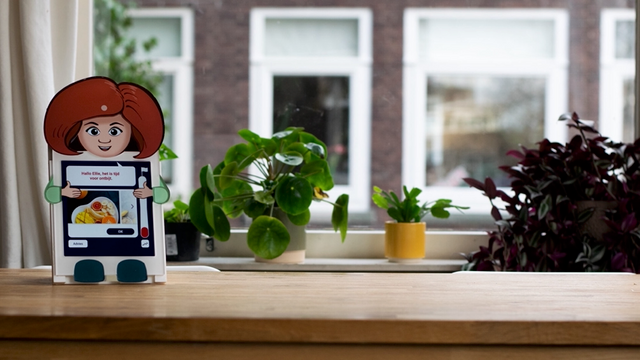
6. Valuable reports in the healthcare sector
Reporting in the healthcare sector takes a lot of time, because healthcare professionals need to follow a strict set of rules when writing their reports. As a result, important details are often forgotten. The Tabula Rasa method offers a blank page, an empty text area. All important findings are written down here and can later be added to a goal from the care plan or to-do list using colours. In addition, there’s more freedom to report in your own way while at the same time cooperating with colleagues and/or clients.
7. Online community for people with depression and their loved ones
Depression Connect is a digital platform for people with depression and their loved ones. This platform is available for everyone who would like to talk to peers about the road to recovery. Would you prefer lurking? You can also just read the experiences and stories and find recognition in them. There are no professionals on the platform: Depression Connect is monitored by volunteers with experience with depression, who also use their stories to support others. It’s a trusted, safe, protected environment where you can participate anonymously if you wish. It also has a separate community for loved ones.
8. Digital biomarkers show doctors how you’re doing
Orikami specialises in developing digital biomarkers for healthcare. Their first products have recently come onto the market. You can ask someone if they’re tired or in pain, but you can also measure it with a test. These so-called digital biomarkers measure various indicators that’ll tell you how someone is doing – or if something’s going wrong. The purpose of these digital biomarkers is to give both the patient and the doctor more information about the course of a disease. This way, the course of the disease can be better predicted, giving patients more control over their lives.

9. Resetting the immune system
Xenikos is working on a drug that can reset the immune system, saving the lives of seriously ill patients. The drug (T-Guard) is intended to combat severe rejection reactions in patients who’ve had a bone marrow transplant. The drug quickly and effectively clears adult T-cells responsible for the rejection reaction. This way, the immune system can safely be reset.
10. Identifying epilepsy in newborn babies
It’s possible to screen newborn babies for the serious and hereditary metabolic disorder pyridoxine-dependent epilepsy (PDE). This screening would make earlier and better treatment of the disease possible. Researchers have discovered new biomarkers that can be used in the heel prick process.

11. AI innovations for pathologists
Aiosyn aims to accelerate the application of artificial intelligence (AI) in pathology and improve the recovery odds of cancer patients worldwide. They’ll bring algorithms from the field of research to clinical practice in order to improve the speed and quality of diagnostics in pathology.
12. Plaster splint and titanium hip from 3D printer
At the Sint Maartens Clinic, they’re constantly looking for the most modern methods to help people move forward, both literally and figuratively. By using a 3D printer, hundreds of patients who were confined to their wheelchairs can now walk again thanks to a new custom-made titanium hip. Additionally, in the plaster room patients can get a perfectly fitting hand splint thanks to the 3D printer.
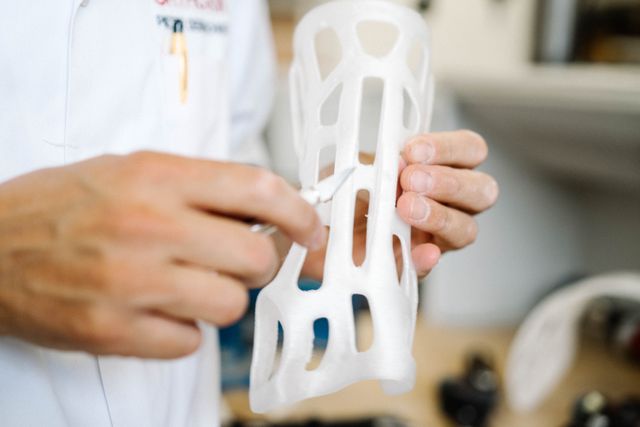
13. Band-aids that stop severe bleeding
Surgical bleeding is still a major challenge in any operating theatre. GATT has developed an innovative band-aid which uses a synthetic polymer for haemostatic sealing during surgery. It is the first product based on their patented NHS-POx technology, which allows surgeons to not just stop a bleed faster, but also create a stronger seal.
14. Medicine for energy metabolism disorders
Khondrion researches medication for the treatment of energy metabolism disorders. Energy metabolism disorders, or mitochondrial diseases, are very rare. Mitochondria are found in almost every cell in the body, their main function being generating energy. When that goes wrong, the cells in your body not only lack energy but also develop harmful compounds within the cell. After almost 9 years, Khondrion’s gathered knowledge has enabled them to develop their first drug: sonlicromanol. The drugs is still in phase 2b of testing, but they hope to have good news soon.
15. Testing coagulation factors at home
Enzyre has developed an electronic microfluidic biochip to measure coagulation factor levels in minimal amounts of blood. The haemostasis biochip is the size of a credit card and easily fits in your pocket. By connecting this device to your smartphone, you can measure your coagulation factors comfortably and affordably anywhere, anytime.
16. Irradiating liver tumours from the inside while monitoring them from the outside
During the treatment of a patient with liver cancer, a research team from the Radboudumc witnessed injected radioactive pellets entering a liver “live on screen” for the first time. As far as we know, it has never been possible to make the pellets visible while they were being administered. This discovery will open the way to a more personalised approach to liver tumours.
